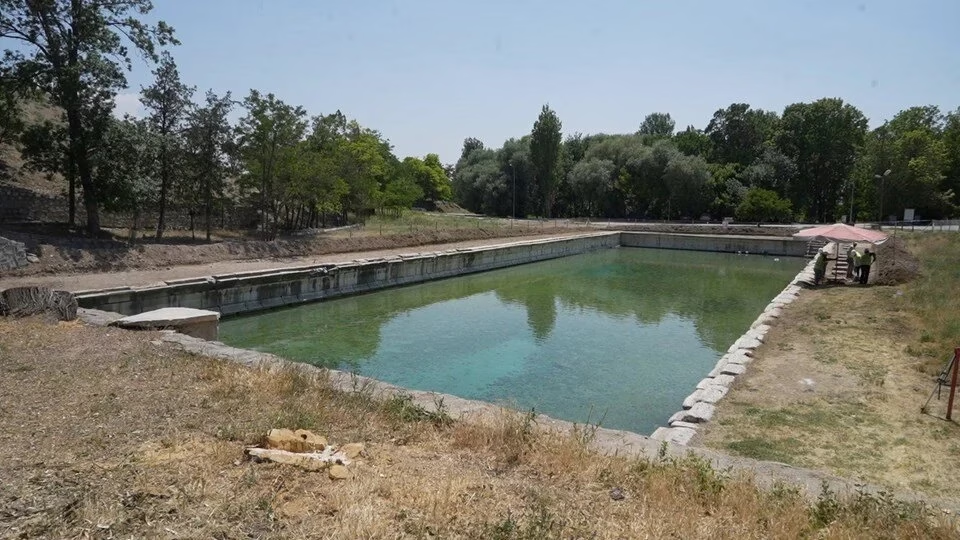In the heart of Central Anatolia, Turkey, a monumental Roman water structure is coming back into the spotlight. Located in the Bahçeli district of Niğde, the Roman Pool of ancient Tyana—built during the reigns of Emperors Hadrian and Trajan—is being excavated for the first time since 1946.
This vast structure, once central to supplying clean drinking water to the city of Tyana, showcases the sophistication of Roman hydraulic engineering. Led by Prof. Dr. Osman Doğanay, the current excavation project is revealing not only the pool itself but also surrounding structures possibly connected to ancient daily life and infrastructure.
A 2,000-Year-Old Engineering Marvel
The Roman Pool is believed to have collected spring waters from the Bolkar and Aladağlar mountains and distributed them to Tyana through nearly 3 kilometers of underground tunnels and aqueducts. Serving a population of approximately 35,000 people, the system highlights the ingenuity of Roman urban planning and water management.
“This site was once dismissed as a swamp until initial work began in 1946. Now, we’re uncovering architectural remains that may belong to ancillary buildings or decorative features around the pool,” said Prof. Doğanay.

Olympic-Scale Dimensions from Antiquity
Measuring 21 by 62 meters, with a depth of up to 2.5 meters, the pool meets modern Olympic standards. Due to its function as a drinking water source, historians believe it may have once been covered. Preliminary findings also suggest the presence of porticos or ceremonial buildings nearby, which will be clarified as the excavations proceed.
Reviving History for Global Tourism
The nearby Köşk Höyük settlement—dating back to the Chalcolithic era—will be integrated into a broader heritage preservation and tourism project. The goal is to transform the site into an immersive archaeological park that offers a comprehensive view of the region’s ancient past.
Currently attracting around 200,000 visitors annually, the area is expected to draw nearly 1 million tourists per year after the restoration and development phases are complete.





